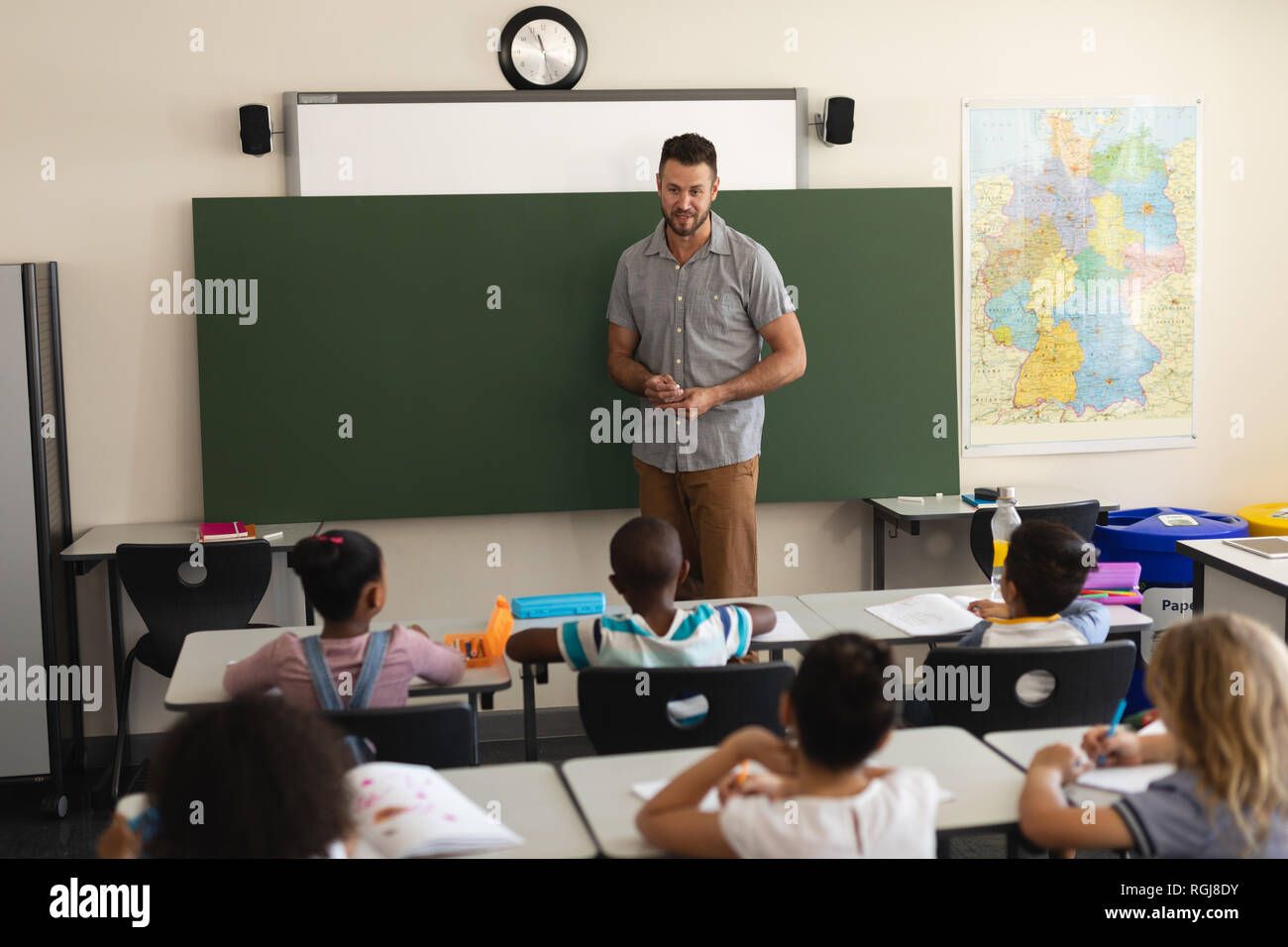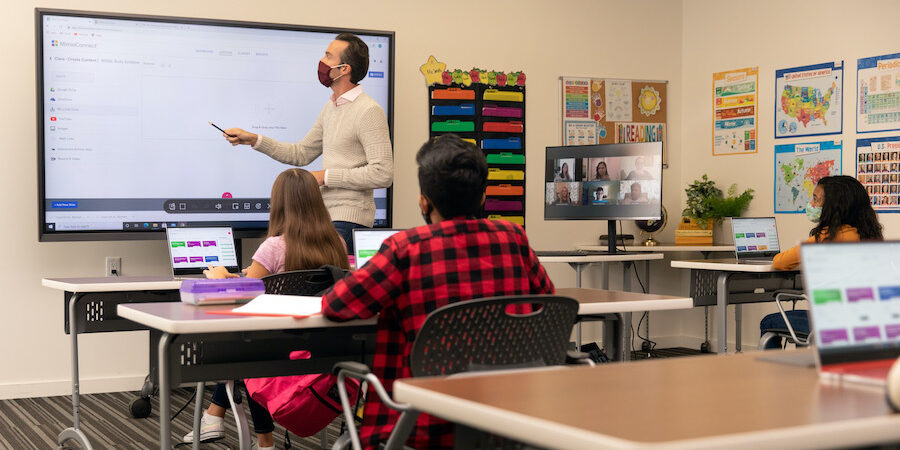Effective Primary Science Tuition Singapore for Better Exam Results
Effective Primary Science Tuition Singapore for Better Exam Results
Blog Article
Exploring the Different Teaching Strategies in Key Scientific Research Education And Learning Today
The landscape of key scientific research education is progressing, with different mentor methods acquiring prominence in contemporary class. Inquiry-based learning, hands-on experiments, and the assimilation of technology are redefining how teachers involve young minds. Additionally, collaborative techniques and set apart instruction are being employed to accommodate the varied requirements of pupils, boosting both interaction and understanding. As we take a look at these methods, concerns occur about their performance and the effects for future academic practices. What might these changes in strategy mean for the following generation of learners?
Inquiry-Based Knowing
Inquiry-Based Understanding (IBL) is a pedagogical method that motivates pupils to explore clinical principles through doubting, examination, and hands-on experimentation. This technique stresses the role of students as active individuals in their learning, promoting essential thinking and analytical abilities. By involving with real-world inquiries, students become interested and determined, which boosts their understanding of scientific principles.
In IBL, teachers serve as facilitators, directing trainees as they browse their questions instead of supplying details straight. This student-centered approach enables differentiation, accommodating various discovering styles and speeds. Trainees establish skills in developing hypotheses, developing experiments, and examining information, which are crucial for scientific literacy.
In addition, IBL cultivates cooperation amongst trainees, motivating them to share ideas and findings. This cumulative inquiry promotes social abilities and a sense of neighborhood within the classroom. The procedure of query motivates resilience, as pupils discover to embrace failing as a tipping stone towards understanding.
Hands-On Experiments
Hands-on experiments are a crucial element of effective scientific research education, complementing the concepts of inquiry-based discovering. These experiments allow trainees to engage straight with scientific concepts, cultivating a deeper understanding via experiential discovering. By controling products and observing results, young students can comprehend abstract theories in substantial means.
Such activities advertise essential reasoning and problem-solving abilities, as students hypothesize results, conduct experiments, and analyze outcomes. This process urges them to ask concerns, improve their understanding, and establish a scientific frame of mind. Furthermore, hands-on experiments can be tailored to varied learning styles, ensuring that all trainees have the chance to engage meaningfully with the web content.
Additionally, hands-on experiments often motivate partnership amongst peers, advertising synergy and communication skills. Operating in teams makes it possible for pupils to share concepts, discuss findings, and pick up from one another, which improves their general educational experience.
Incorporating hands-on experiments into the main science curriculum not just enhances the discovering setting but likewise cultivates a long-lasting interest in science. By actively getting involved in their education and learning, pupils are more probable to create a passion for clinical query that extends past the classroom.

Innovation Assimilation
Incorporating innovation right into key scientific research education has ended up being increasingly crucial in fostering trainee involvement and enhancing finding out outcomes. Using digital tools, such as interactive simulations, digital laboratories, and academic software program, offers pupils with possibilities to explore scientific ideas in cutting-edge methods. These resources help with a deeper understanding of intricate subjects by enabling students to visualize and manipulate variables that would be not practical in a traditional class setting.
Furthermore, technology integration encourages personalized learning experiences. Trainees can proceed at their very own speed, revisiting difficult concepts via multimedia sources, which accommodate various learning styles. This adaptability not just supports specific growth however additionally cultivates a feeling of freedom in learners.
In addition, innovation acts as a bridge to real-world science, linking trainees with existing research and expert contributions. Accessibility to on the internet databases and scientific journals widens trainees' viewpoints on scientific query and promotes essential thinking skills.
Collaborative Knowing
Joint understanding plays a vital duty in primary scientific research education and learning by promoting teamwork and interaction abilities amongst students. This technique motivates learners to work together, share expertise, and participate in problem-solving, which boosts their understanding of scientific concepts. By participating in group tasks, trainees learn to express their ideas, listen to diverse point of views, and discuss options, all of which are important abilities in both real-world and scholastic contexts.

Research study shows that collective discovering can bring about raised motivation and involvement in scientific research topics, as students locate pleasure in shared experiences (primary science tuition Singapore). Furthermore, this strategy prepares trainees for future collaborative undertakings, outfitting them with the skills necessary for reliable team effort in greater education and learning and specialist settings. Inevitably, embracing collaborative understanding in primary science education can considerably enrich the knowing experience and advertise a much deeper understanding of scientific inquiry
Distinguished Instruction

Differentiated instruction can materialize in different methods, such as differing the material, procedures, or items of discovering. Instructors may make use of tiered assignments that give differing degrees of complexity, enabling students to function at their corresponding preparedness degrees. In addition, flexible organizing methods can help with collaboration amongst pupils with various capabilities, promoting peer understanding.
Evaluation plays a vital role in this approach, as it notifies instruction and aids educators understand each pupil's special demands. Developmental assessments, such as tests and observations, can lead instructors in readjusting their strategies like this to enhance learning end results. primary science tuition Singapore. Ultimately, by carrying out set apart instruction in primary scientific research education, instructors can cultivate a much more equitable and efficient discovering environment, encouraging all students to reach their complete capacity in understanding scientific sensations
Final Thought
In summary, the varied training strategies in primary scientific research education and learning, consisting of inquiry-based discovering, hands-on experiments, modern technology assimilation, collective understanding, and separated instruction, collectively contribute to a more reliable knowing atmosphere. These techniques promote critical thinking, analytic abilities, and a much deeper understanding of clinical principles. By carrying out these strategies, educators can produce appealing and encouraging classrooms that deal with the varied requirements of trainees, inevitably cultivating a lifelong passion in science and enhancing academic success.
Inquiry-Based Discovering (IBL) is an instructional strategy that motivates pupils to explore scientific principles with questioning, examination, and hands-on experimentation.Joint knowing plays a crucial role in key science education by fostering synergy and interaction abilities amongst pupils.Research study shows that joint learning can lead to enhanced inspiration and engagement in scientific research topics, as pupils locate enjoyment in shared experiences.In cultivating you can find out more a comprehensive learning atmosphere, distinguished instruction emerges as an essential technique to fit the varied requirements and capacities of click for more pupils in primary scientific research education. Ultimately, by applying set apart guideline in primary scientific research education and learning, educators can cultivate a more equitable and reliable learning environment, equipping all pupils to reach their complete potential in comprehending clinical sensations.
Report this page